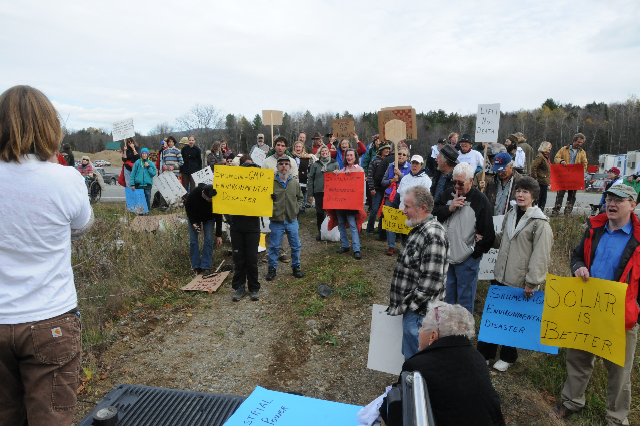Give me a tree and I'll save the world – that is the message that comes across from a book just published by the French botanist Francis Hallé, Du bon usage des arbres (Making good use of trees). The book is a defence of trees addressed to decision-makers and town planners. It is hard to know which specific tree to start with, but let's take as our prime example the plane tree planted by the Comte de Buffon in 1785 at the entrance to the Jardin des Plantes in Paris. Visitors can see how well it has fared 226 years on, even though it has never been pruned.
Plane trees, like many others, have a long lifespan. They are even "potentially immortal", claims Hallé. "Man is senescent, that is to say is programmed to die, but a plane tree is not," he said. After its leaves have fallen, life begins again in the spring and the tree recovers its youthful genomes. If it is not subjected to accidents, diseases or humans, the plane tree could live for centuries. "When you talk about a 100-year-old tree, it's just a kid in shorts," said the botanist, who knows of a 2,000-year-old olive tree in Roquebrune-Cap-Martin on the Côte d'Azur.
And trees create colonies. To reproduce they distribute seeds all around, but they also spread roots from which offshoots can grow. That is why 100-year-old plane trees are often surrounded by their younger brothers, and why poplars have grown for the past 10,000 years in Utah, and there are 13,000-year-old creosote bush clones in the Mojave desert of southern California, and 43,000-year-old stands of King's holly spread over an area of one kilometre in Tasmania. Hallé says: "The history of our zoological species can be found in the life of a tree. That should make us feel humble." Perhaps that is the first good turn trees do for us.
Another marvellous thing about trees is that they solve their own problems without moving. They are model citizens, decorative, quiet, economical, calm and courageous. They are content with so little, just light, water and trace elements, and silently elude their enemies by developing an arsenal of chemicals. Trees produce molecules to keep mice and insects at bay and in doing so provide man with taxol, an efficient anti-cancer drug. As we all know, lime, birch, willow, hazel and lemon trees are all used for medicinal purposes.
Humans, with a mere 2 square metres of skin, underestimate the surface area of a tree. To calculate that you need to measure both sides of each leaf, add the surface of the trunk, the branches and boughs, the perennial and feeder roots and the absorbent root hairs, not forgetting the bark pockets. A 15-metre tree in leaf would cover a total area of 200 hectares, which is the size of Monaco. A tree doubles its weight when wet, and its entire surface breathes and allows us to breathe.
Hallé believes that arboreal photosynthesis is our best ally in the fight against global warming. Buffon's plane tree, like all trees, absorbs quantities of carbon dioxide, responsible for greenhouse gases, and between 20% and 50% of matter produced by the tree, including wood, roots, leaves and fruit, is composed of CO2. When trees breathe they clean the atmosphere and retain CO2 and urban pollutants such as heavy metals, lead, manganese, industrial soot and nitrous oxide. These are stored in the wood. That is why we should refrain as much as possible from cutting down old trees. The older they are, the better they control pollutants.
At the same time, trees release oxygen that allows us to live. An adult human consumes about 700g of O2 per day, or 255kg per year. In that time, an average tree produces 15kg to 30kg, so about 10 trees are required to provide oxygen for one person. Trees also humidify and cool the atmosphere by evaporation and transpiration. A wooded area of 50 square metres brings the temperature down by 3.5C and increases the humidity by 50%. Leaf movement, especially in conifers, releases negative ions that are supposed to have beneficial effects on health and mood. And the tree is home to many useful species.
Pascal Cribier, a professional gardener, lives in a flat overlooking the Luxembourg Gardens in Paris. He points to the tree tops there. "We only ever see half the tree and can't imagine all the underground activity, the size and strength of the roots, and the many species that live in symbiosis with it. We forget that without trees the earth would deteriorate rapidly and lastingly." It is the secret underground life of trees that led Cribier to his vocation when he was 18. He wanted to understand, to plant and put his hands to the earth.
Now he is also a "garden artist", and exhibits blocks of knotted roots in galleries. In the undergrowth, those roots and the subsoil give life to mushrooms, lichen, ferns, epiphytic plants, insects, worms and mammals. Beneath the ground, the roots circulate tonnes of water for the leaves, and they are often longer than the branches. The Libyan jujube tree is two metres high but has branches 60 metres long. "Man can't live without trees, and yet they are under threat everywhere," warns Hallé. The UN declared 2011 to be the International Year of Forests. Trees are home to 50% of the world's biodiversity, and provide subsistence to 1.6 billion humans.
Surveys by the United Nations collaborative programme on reducing emissions from deforestation and forest degradation in developing countries show that half the planet's forests were destroyed in the 20th century. From 2000 to 2005, 7.3m hectares of tropical forest disappeared every year, or 20,000 hectares a day. As a result, tropical deforestation and forest degradation account for between 15% and 20% of CO2 emissions, because trees release carbon when they are burned or felled. The UN believes that tree planting could offset 15% of carbon emissions in the first half of the 21st century.
Take a (French) city dweller dining on a cafe terrace. He or she orders a salad with olive oil, lemon and pine nuts, followed by a truffle omelette and a glass of Chablis, and a poire belle-hélène for dessert (poached pears with melted chocolate). The meal ends with a cup of coffee sprinkled with cinnamon and a gin-based liqueur. Then our diner takes an aspirin and jots down a few lines in a notebook with a disposable ballpoint. That person has just used the output of 15 trees: ash for the chair, elm for the table, olive for the oil, umbrella pine for the nuts, a lemon tree, oak for the truffles, false acacia for the white wine barrel, a pear tree, a cocoa tree, a coffee tree, a cinnamon tree, juniper tree to flavour the gin, willow for the aspirin, castor tree for the plastic and Scots pine for the paper. We could not live without trees.
Nor could cities. The urgent need to protect trees in cities led the Food and Agriculture Organisation of the United Nations (FAO) to dedicate October 2011 to urban and periurban forestry. By 2030, 70% of Earth's population will be urban and will need to be fed, since the countryside will not be enough. Urban and periurban agriculture exist already in wastelands and slums. City dwellers plant trees and vegetables to feed themselves and the FAO has been providing assistance and credit for years.
In Europe, Brussels has protected the Forêt de Soignes in the middle of the city, and Zurich is doing the same. Barcelona has made its nearby forest a protected area, and Nantes intends to plant 1,400 hectares of trees just outside the city. Julien Custot, FAO adviser, says: "Urban trees are vital in preserving the soil, containing floods, providing energy and producing healthy foodstuffs. They make cities cooler and more pleasant."
The Indian economist Pavan Sukhdev, co-director of Deutsche Bank in Mumbai, is also study leader for the Economics of Ecosystems and Biodiversity (TEEB) project. In October 2010, he made a financial assessment of the services rendered by ecosystems for the Nagoya Convention of Biological Diversity, whose protocol France has just signed. He calculated the economic value of nature and its deterioration, after a three-year survey led by 100 experts. According to Sukhdev, if we halved the deforestation rate by 2030, the reduced CO2 emissions would cut the cost of global warming by €2.6 trillion ($3.5tn). The erosion of forests, soil and coastal areas leads to losses of between €1.3tn and €3.1tn a year. "It is the economic invisibility of ecosystems that has led to this ecological crisis," says Sukhdev.
As a gardener, Cribier is concerned about those figures. "A tree is invaluable," he said. "What we get from trees is priceless."


